Edward Steichen
| Surname | Steichen |
| Given Name | Edward |
| Born | 27 Mar 1879 |
| Died | 25 Mar 1973 |
| Country | United States |
| Category | Photography |
| Gender | Male |
Contributor: David Stubblebine
ww2dbaseEdward Steichen was born Éduard Jean Steichen in Bivange (Béiweng), Luxembourg in 1879. His family emigrated to the United States in 1881 while Edward was still an infant, settling in Milwaukee, Wisconsin. He purchased his first camera at age 16 but was drawn to the artistic applications of photography rather than the more common portrait work or landscapes. He developed an association with Alfred Stieglitz in 1900 and became one of the most featured photographers in Stieglitz' magazine "Camera Work." The two would later open a photographic gallery in New York that was also aimed more at the art world than the commercial photography market.
ww2dbaseIn 1904, Steichen was one of the first to experiment with color photography. In 1911, Steichen was given a dare to photograph fashion as fine art and the result is what is considered to be the first modern fashion photography shoot. Steichen went to France with the United States Army Signal Corps in 1917 where he commanded the aerial photographic division of the American Expeditionary Forces. Between the wars, Steichen resumed his private fashion photography work while also broadening into non-fashion photography. Steichen's 1928 photograph of actress Greta Garbo is widely considered the definitive portrait of the actress (this photo appeared on the cover of LIFE magazine in 1955). Steichen became the chief photographer at Vogue and Vanity Fair magazines and a commercial photographer for the J. Walter Thompson Advertising Agency. In October 1941, as curator at the Museum of Modern Art, Photography Section, Steichen teamed up with his brother-in-law, poet Carl Sandburg, in designing a photo exhibition on the theme of national defense as the country was gearing up for war. By the time the show opened in May 1942, the country was at war so the exhibit was renamed "The Road to Victory" and was very well received.
ww2dbaseAs the aviation services were scrambling to recruit pilots, the head of the Navy pilot training program, Captain (later Admiral) Arthur Radford, thought getting the assistance of people with advertising experience would help him meet his quota of enlisting 30,000 pilots a year. Radford recruited Steichen in January of 1942 and Steichen gladly accepted. Radford wanted Steichen to create photographs that would "sell" the Navy and so he allowed Steichen to write his own ticket, unprecedented in the Navy bureaucracy of the day. Steichen recruited six other skilled photographers and Radford issued them very broad, very powerful orders that let them go wherever they wanted in the Navy world. Bypassing the Navy's regular photography organization, Steichen's photographers avoided Navy-issue cameras and chose their own models. They sent their film to Washington where Steichen exercised tight control over film developing and printing. As for content, Steichen told his photographers, "Be sure to bring back some photographs that will satisfy the Navy brass, but spend most of your time making those photographs which you feel should be made. Above all, concentrate on the men. The ships and planes will become obsolete, but the men will always be there." It was a system that worked and many of the iconic US Navy photographs from World War II that we know today were taken by Steichen or members of his unit.
ww2dbaseIn Steichen's only venture into motion pictures, he is credited with directing the 1944 documentary "The Fighting Lady" about US aircraft carriers in action in the Pacific. In March 1945, this film received the Academy Award for Best Documentary of 1944. But to be fair, the film footage for "The Fighting Lady" was taken aboard several carriers by several camera crews and the "directing" was more a matter of editing the footage rather than directing the action. What's more, Steichen received substantial uncredited assistance from the great Hollywood director William Wyler.
ww2dbaseAs the war was winding down, Secretary of the Navy James Forrestal personally approached Steichen and asked him to produce a book showing the scope of the Navy's war efforts through pictures. Forrestal wanted six million copies ready within six months to be given (free of charge) to every US sailor as he returned home. Steichen pulled it off, but in the end the Navy could not come up with the money to provide the books without charge. Steichen approached the producers of the book - the paper manufacturers, ink producers, printers, & book binders - and asked them to forego their profits and produce the book at cost. They agreed. The books were 108-page, 11 x 11.5-inch, paper-bound books with 100 large, high-quality images of the US Navy in action in all theaters. Steichen included none of his own pictures and went outside his own staff for many of the pictures, using images taken by the regular Navy and Coast Guard photographers. The books were priced at 35-cents a copy and sold at the rate of a million copies a month.
ww2dbaseAfter the war, Steichen returned to the Museum of Modern Art in New York where he served as Director of Photography until 1962. During this time, he produced several exhibitions that received critical acclaim. Edward Steichen passed away in 1973 at age 93 at his family farm in Connecticut, United States.
ww2dbaseSources:
Wikipedia
Smithsonian's Air & Space Magazine: "Steichen's Navy" [Mar 2006]
Smithsonian's Air & Space Magazine: "Steichen Sent Me" [Sep 2009]
Last Major Revision: May 2016
Photographs
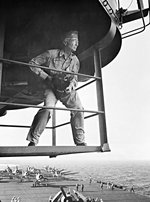 | 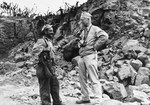 | 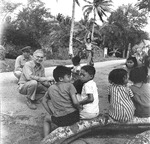 |
Photographs Taken by Edward Steichen
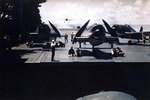 | 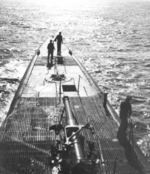 | 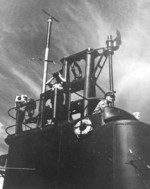 | 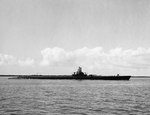 |
Edward Steichen Timeline
| 27 Mar 1879 | Edward Steichen was born in Béiweng, Luxembourg. |
| 6 Dec 1963 | Edward Steichen was awarded the Presidential Medal of Freedom by US President Lyndon Johnson. |
| 25 Mar 1973 | Edward Steichen passed away in West Redding, Connecticut, United States. |
Please consider supporting us on Patreon. Even $1 per month will go a long way! Thank you. Please help us spread the word: Stay updated with WW2DB: |
- » US Women's Army Corps "Six Triple Eight" Awarded with Congressional Gold Medal (30 Apr 2025)
- » Wreck of Soviet Submarine M-49 Found (10 Apr 2025)
- » Japanese Emperor Visited Iwoto (Iwo Jima) (8 Apr 2025)
- » Race, Holocaust, and African-American WW2 Histories Removed from the US Naval Academy Library (7 Apr 2025)
- » US Government Plans to Purge WW2 Information (17 Mar 2025)
- » See all news
- » 1,167 biographies
- » 337 events
- » 44,617 timeline entries
- » 1,244 ships
- » 350 aircraft models
- » 207 vehicle models
- » 376 weapon models
- » 123 historical documents
- » 261 facilities
- » 470 book reviews
- » 28,516 photos
- » 365 maps
Joachim von Ribbentrop, German Foreign Minister, Aug 1939
Please consider supporting us on Patreon. Even $1 a month will go a long way. Thank you!
Or, please support us by purchasing some WW2DB merchandise at TeeSpring, Thank you!